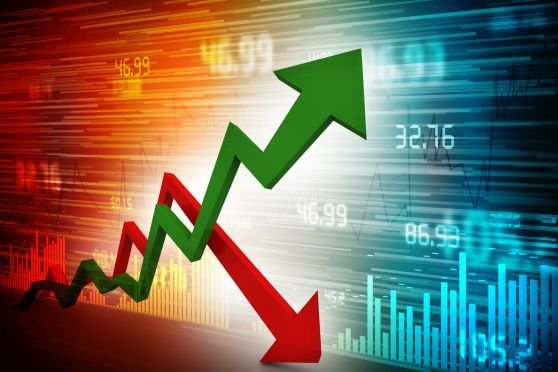The VIX, or Volatility Index, is a powerful tool in the world of finance, often referred to as the “fear gauge” or “fear index.” It provides insights into the market’s expectations of volatility over the next 30 days. Introduced by the Chicago Board Options Exchange (CBOE), the VIX has become an indispensable indicator for traders, investors, and analysts seeking to gauge market sentiment and predict potential market movements.
This article delves deep into the concept of the VIX, its significance, calculation, and how it can be used to predict market trends. We’ll also explore the various strategies that leverage the VIX, its limitations, and how to interpret its fluctuations effectively.
What is the VIX?
The VIX measures the market’s expectations of volatility based on the prices of S&P 500 Index options. It is calculated using the implied volatilities of a wide range of options contracts, providing a real-time snapshot of market sentiment.
Key Characteristics of the VIX:
- Expressed as an Annualized Percentage: For instance, a VIX value of 20 indicates an expected annualized volatility of 20% in the S&P 500 Index.
- Forward-Looking: The VIX reflects market expectations for volatility over the next 30 days.
- Inverse Relationship with Market Performance: Typically, the VIX moves inversely with stock prices. When the VIX rises, stock prices often fall, and vice versa.
The VIX’s reputation as a “fear gauge” stems from its ability to capture the level of uncertainty or fear in the market. High VIX values suggest significant uncertainty, while low values indicate market complacency.
How is the VIX Calculated?
The VIX is derived from the implied volatilities of S&P 500 Index options. The calculation involves complex mathematical models that factor in:
- Options Prices: The prices of near-the-money options and those slightly out-of-the-money.
- Time to Expiry: The remaining time before the options expire.
- Strike Prices: A range of strike prices for calls and puts.
The formula essentially aggregates the weighted average of the implied volatilities across these options, annualizes the figure, and produces a percentage. While the detailed calculation is intricate, the essence lies in capturing the market’s perception of risk.
Interpreting the VIX: What Do the Numbers Mean?
Understanding the VIX’s levels is crucial for interpreting market sentiment:
- Low VIX (Below 12): Indicates market stability and investor confidence. Typically observed during bullish market conditions.
- Moderate VIX (12-20): Reflects a balanced market with moderate volatility expectations.
- High VIX (Above 20): Signals uncertainty or fear, often associated with market corrections or bearish trends.
- Extreme VIX (Above 30): Suggests panic selling and heightened risk aversion.
Using the VIX to Predict the Market
The VIX serves as a predictive tool, offering insights into potential market movements. Here’s how:
1. Sentiment Indicator
- Rising VIX: Suggests increasing fear or uncertainty, which often precedes market downturns.
- Declining VIX: Indicates improving confidence, signaling potential market recoveries.
2. Extreme Levels and Reversals
- High VIX Levels: Often coincide with market bottoms, presenting buying opportunities.
- Low VIX Levels: Reflect market complacency, which can precede corrections.
For instance, during major market sell-offs, the VIX typically spikes as investors rush to buy protective options.
3. Divergence Analysis
- Rising VIX with Rising Markets: Indicates underlying uncertainty, possibly signaling a reversal.
- Falling VIX with Falling Markets: Suggests limited fear, indicating a temporary pullback.
4. Volatility Spikes
Sudden spikes in the VIX often align with major news events, geopolitical tensions, or economic shocks. Monitoring these spikes can help anticipate short-term market disruptions.
5. Correlation with Market Movements
The inverse relationship between the VIX and the stock market offers clues:
- When the VIX rises, markets often fall.
- When the VIX declines, markets tend to rise.
Trading and Investment Strategies Using the VIX
The VIX can be a valuable component of various trading and investment strategies:
1. Hedging Portfolios
Investors use VIX derivatives to hedge against market volatility. For instance:
- Buying VIX futures or options can protect portfolios during volatile periods.
- Investing in volatility ETFs or ETNs provides indirect exposure to the VIX.
2. Volatility Arbitrage
Traders exploit discrepancies between implied volatility (VIX) and realized volatility. If the VIX overestimates future volatility, traders might sell volatility instruments, and vice versa.
3. Directional Trading
Traders use VIX movements to predict market direction:
- Rising VIX: Signals bearish trends, prompting short positions.
- Falling VIX: Indicates bullish trends, encouraging long positions.
4. Market Timing
Extreme VIX levels help identify entry and exit points:
- High VIX levels may signal market bottoms, presenting buying opportunities.
- Low VIX levels may indicate overbought conditions, suggesting profit booking.
Historical Case Studies
1. Global Financial Crisis (2008)
During the 2008 financial crisis, the VIX surged to unprecedented levels, peaking above 80. This reflected extreme fear and uncertainty. As markets stabilized, the VIX gradually declined, signaling recovery.
2. COVID-19 Pandemic (2020)
The onset of the COVID-19 pandemic in March 2020 caused the VIX to spike to nearly 85, reflecting panic selling and market volatility. This marked a short-term market bottom, followed by a strong recovery.
3. Russia-Ukraine Conflict (2022)
Geopolitical tensions like the Russia-Ukraine conflict led to sharp volatility spikes, as reflected in the VIX. Investors turned to safe-haven assets, and the VIX provided critical insights into market fears and uncertainties during this period.
Limitations of the VIX
While the VIX is a valuable tool, it has certain limitations:
- Short-Term Indicator: The VIX only predicts volatility for the next 30 days, limiting its long-term utility.
- Market-Specific: The VIX focuses on the S&P 500 and may not reflect global market dynamics.
- Lagging Indicator: By the time the VIX spikes, market moves may already be underway.
- No Directional Insight: The VIX measures volatility but doesn’t indicate whether the market will rise or fall.
- Sensitivity to Market Liquidity: During illiquid periods, the VIX may give distorted readings.
Beyond the VIX: Alternative Volatility Indices
Several other indices track volatility in different markets:
- VXN: Measures volatility for the Nasdaq-100 Index.
- RVX: Tracks volatility in the Russell 2000 Index.
- VXFXI: Monitors volatility in Chinese markets.
- EURO STOXX 50 Volatility Index (VSTOXX): Reflects European market volatility.
- MOVE Index: Tracks bond market volatility.
These indices provide a broader view of global volatility trends and cater to region-specific or asset-specific analysis.
Conclusion
The VIX remains a crucial tool for understanding market sentiment and predicting potential movements. By analyzing its levels, traders and investors can make informed decisions, hedge risks, and capitalize on market volatility. However, like any tool, the VIX should be used in conjunction with other indicators and analysis methods for a comprehensive market view.
As markets evolve, the VIX’s relevance continues to grow, offering valuable insights into the ever-changing dynamics of financial markets. Whether you are a seasoned trader or a novice investor, understanding the VIX is essential for navigating today’s complex market environment. Its ability to gauge fear, uncertainty, and confidence ensures it remains a cornerstone of market analysis.
ALSO READ: Top-Down Strategy: See the Big Picture




